| |
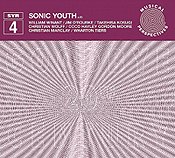 Sonic Youth
Sonic Youth
"SYR 4: Good Bye 20th Century"
(SYR/Smells Like Records)
Sonic Youth may have played arena tours with Neil Young, and they may
also have been a Lollapalooza ringer a few years back, but in 1999, the
band's avant-garde deep-noise roots have never been closer to their
hearts. The two-CD "SYR 4: Good Bye 20th Century" is one of their most
dissonant and experimental releases yet, and it's the fourth in a series
which the quartet has recorded on their own label, SYR/Smells Like
Records. The discs in this series (the first came in 1997) have more in common with the band's experimental collaborations with downtown guitar-noise composer Glenn Branca in the '80s than the tuneful-around-the-edges CDs, like "Goo" and "Dirty," which they released on Geffen in the early '90s.
On "SYR 4," Sonic Youth performs a collection of pieces written by some of
the late-20th century's more influential avant-garde composers, including
John Cage, Pauline Oliveros, Steve Reich, Yoko Ono, Christian Wolff and
others. Each one relies on the interpretations and improvisations of
its performers, and none are exactly easy to listen to. There are minor—if any—melodies and only a few voice fragments here and there, like when
Kim Gordon quietly murmurs a little of the Goldilocks story on the
Christian Wolff piece, "Edges." Also, the 12-second long "Voice Piece
for Soprano" from Yoko Ono has Kim Gordon and Thurston Moore's own
pre-schooler, Coco Hayley, shouting her little heart out.
Some of the CD is quietly haunting, like "+-" by Takehisa Kosugi, which
has the feel of swimming along an underwater lakebed strewn with guitars.
"Six for a New Time," a piece especially written by
Oliveros for this project, is a pounding daydream of percussive guitars, while
James Tenney's "Having Never Written a Note for Percussion" shows Sonic
Youth's deft hand at building a delicate-then-thunderous noise climax.
One fun tune, "Piano Piece #13 (Carpenter's Piece)" by George Maciunas,
has the band hammering nails into the keys of a piano. It's a collusion
of percussion strands which was videotaped and included in the first
enhanced CD as a Quicktime movie.
This is an inspiring work which occupies a precarious place
between modern rockers and modern composers. But it's not all peaches
and feedback: Don't expect to be whistling any of these tunes later on. —Jeff Houze
|
|
Metallica with the San Francisco Symphony Orchestra
"S&M"
(Elektra)
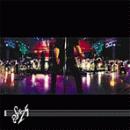 Metallica's music (especially their pre-"Black Album" period) has always sounded orchestral, with its chugging guitars, elaborate rhythms and whipsaw chord changes. But "S&M," a double-live album recorded with the San Francisco Symphony Orchestra, is a frustrating mix: great live performances of classic Metallica tunes, augmented by misguided, often kitschy orchestrations (by Michael Kamen) which undermine the original material.
Metallica's music (especially their pre-"Black Album" period) has always sounded orchestral, with its chugging guitars, elaborate rhythms and whipsaw chord changes. But "S&M," a double-live album recorded with the San Francisco Symphony Orchestra, is a frustrating mix: great live performances of classic Metallica tunes, augmented by misguided, often kitschy orchestrations (by Michael Kamen) which undermine the original material.
The instrumental "Call of Ktulu" gives both rock band and orchestra a chance to shine. "The Thing That Should Not Be" is terrifying thanks to James Hetfield's loony-bin vocals, augmented minor-key horns and Hell's own bells (really the SFSO percussion section). The quiet opening of "Hero of the Day" becomes Berlioz-like with gently swelling strings that give way to crunching riffs, trumpet voluntaries and lonely horn-calls. "S&M" ends with "Battery," fittingly enough, in which the acoustic prelude is made Stravinsky-like by the addition of bassoons, and Hetfield's emotional vocals prove that he really has learned to sing this decade.
Unfortunately, "Master of Puppets" becomes messy, with ornamental string figures dancing around the headlong main riff; "Fuel" really doesn't need that glockenspiel; and the Metallicats should have passed on recording "Nothing Else Matters" for a third time. On the other hand, it beats the hell out of doing an "Unplugged." —Paul J. Pelkonen
|

|
DJ Krust
"Coded Language"
(Island)
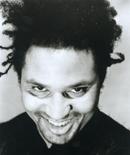 One good album every 12 months is about the best we can expect from jungle nowadays, and it usually seems to come from Roni Size and company. Following in the footsteps of Size's recent, much underrated "Breakbeat Era," DJ Krust's "Coded Language" is proof that the genre still has musical possibilities to offer. Look no further than the title track, which features slam poet Saul Williams dropping a well-nigh biblical rant on the black musical diaspora over Krust's intransigent beats and sci-fi effects. Like the album in general, it's slightly pompous, but as incendiary as anything you'll hear this year.
One good album every 12 months is about the best we can expect from jungle nowadays, and it usually seems to come from Roni Size and company. Following in the footsteps of Size's recent, much underrated "Breakbeat Era," DJ Krust's "Coded Language" is proof that the genre still has musical possibilities to offer. Look no further than the title track, which features slam poet Saul Williams dropping a well-nigh biblical rant on the black musical diaspora over Krust's intransigent beats and sci-fi effects. Like the album in general, it's slightly pompous, but as incendiary as anything you'll hear this year.
Krust's signature sound is brooding, soulful cyberfunk: tough, deceptively simple breaks offset with otherworldly atmospherics, keening strings and diva vocals. He keeps momentum flowing with excursions into spacey hip-hop soul and an orchestral track which—unlike Goldie's sometimes painful attempts at city symphonies—actually works. "Coded Language" is too long; featured singer Morgan, whose voice is powerful but generic, gets a couple of tracks too many to wail over. But program it down to around 55 minutes (from 73), and you've got an accomplished urban warrior soundtrack. —Ben Williams
|
 |
Dream Theater
"Metropolis Part II: Scenes from a Memory"
(Elektra)
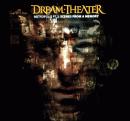 For six years, fans of Long Island progressive rockers Dream Theater have been wondering when they'd hear a sequel to "Metropolis Part I: The Miracle and the Sleeper," a nine-minute workout from "Images and Words." The band's eighth studio album, "Metropolis Part II: Scenes from a Memory" is that long-awaited follow-up, an elaborate concept album about hypnosis, dreaming, politics, time travel, jealousy and, finally, murder.
For six years, fans of Long Island progressive rockers Dream Theater have been wondering when they'd hear a sequel to "Metropolis Part I: The Miracle and the Sleeper," a nine-minute workout from "Images and Words." The band's eighth studio album, "Metropolis Part II: Scenes from a Memory" is that long-awaited follow-up, an elaborate concept album about hypnosis, dreaming, politics, time travel, jealousy and, finally, murder.
Like good prog-rockers, D.T. favors long songs, complex arrangements and cross-rhythms, topped with James LaBrie's operatic vocals. Stickman Mike Portnoy is the spiritual heir to Neil Peart. Bassist John Myung gives new meaning to the words "10 fingers of doom." New keyboardist/arranger Jordan Rudess fits right in, providing the melodic edge this band has lacked on its last three studio releases. And guitarist John Petrucci is comfortable on acoustic, stunning on electric.
Highlights include the thundering "Home," the gospel-inflected "Through Her Eyes" and "The Spirit Carries On." What makes this sprawling, 77-minute record hang together is the tightly-written, carefully-played music, which incorporates themes and motifs from the first "Metropolis" to create a fascinating, if long-winded brew. Give it a spin. —Paul J. Pelkonen
|

|
Soulwax
"Much Against Everyone's Advice"
(Uni/Almo)
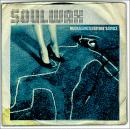 Soulwax has made a CD in which rich orchestrations jostle strong pop
rhythms and catchy guitar riffs encircle lilting string arrangements.
It's a recipe similar to what's occasionally found on Radiohead's "OK
Computer;" but this band, fronted by Belgian brothers Stephen and David Dewaele, can only
approach Radiohead's heady dynamics, and they lack its dark bite.
Soulwax has made a CD in which rich orchestrations jostle strong pop
rhythms and catchy guitar riffs encircle lilting string arrangements.
It's a recipe similar to what's occasionally found on Radiohead's "OK
Computer;" but this band, fronted by Belgian brothers Stephen and David Dewaele, can only
approach Radiohead's heady dynamics, and they lack its dark bite.
The title track features pleasantly subtle electronica touches sprinkled over
powerchords, and "Flying Without Wings" shows off some pristine
harmonies. "Too Many DJs" jumps smoothly from rock to
subtle electronic backbeat riffs and back again effortlessly. Everything comes together to make "Much Against Everyone's Advice" a
well-crafted pop CD, but I want to see where Soulwax goes next. —Jeff Houze
|

Send feedback here. |
|
|
